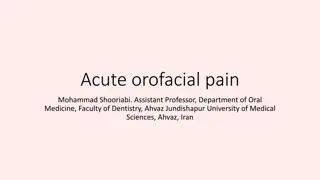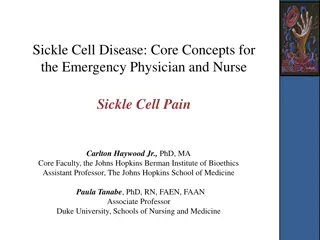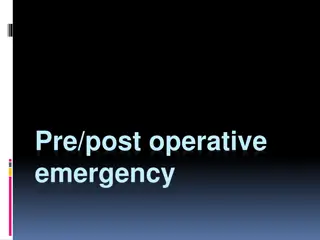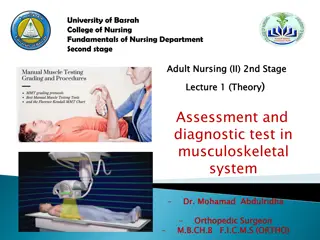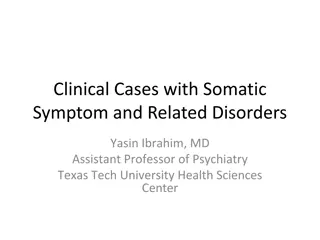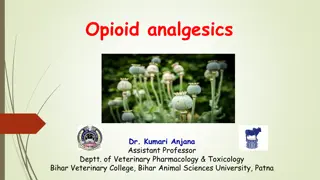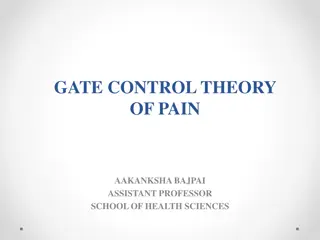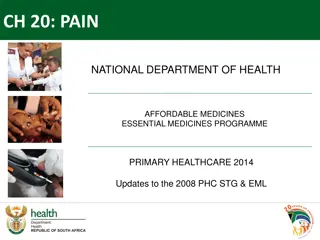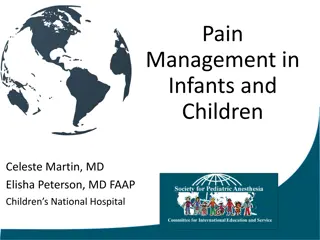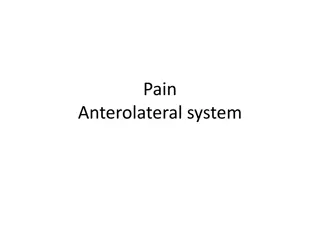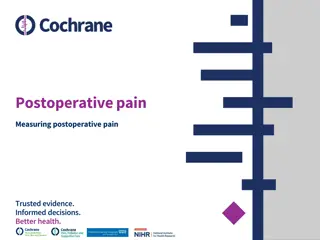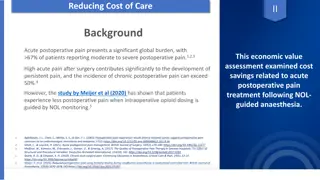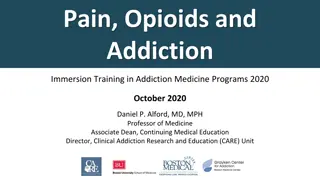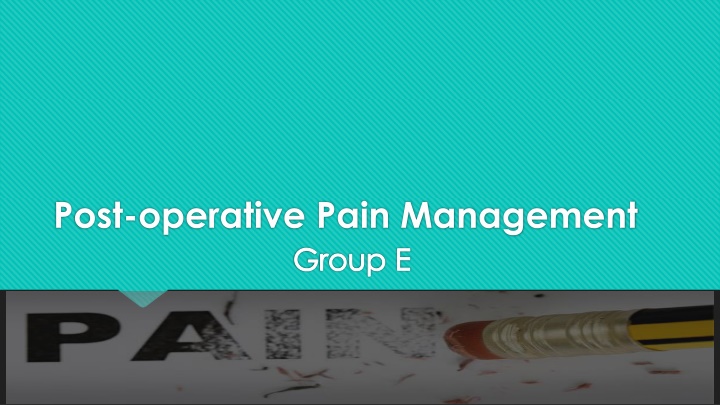
Methods for Post-Operative Pain Management: Explorative Laparotomy Case Study
Explore the various methods for post-operative pain management in a case of explorative laparotomy for a perforated duodenal ulcer. Learn about analgesia, fluids, oxygen therapy, and other essentials in the post-operative care of the patient. Differential diagnosis for unexpected symptoms is also discussed.
Download Presentation

Please find below an Image/Link to download the presentation.
The content on the website is provided AS IS for your information and personal use only. It may not be sold, licensed, or shared on other websites without obtaining consent from the author. If you encounter any issues during the download, it is possible that the publisher has removed the file from their server.
You are allowed to download the files provided on this website for personal or commercial use, subject to the condition that they are used lawfully. All files are the property of their respective owners.
The content on the website is provided AS IS for your information and personal use only. It may not be sold, licensed, or shared on other websites without obtaining consent from the author.
E N D
Presentation Transcript
Post-operative Pain Management Group E
A55 years old patient had explorative laparotomy with midline incision under general anesthesia the intraoperative course was uneventful and surgery lasted 3 hours, the final diagnosis was perforated duodenal ulcer, patient extubated and send to recovery room .
1- Discuss the Methods for post-operative management for this case. 1. Analgesia: The most painful operations are thoracic and abdominal, so we should give the patients analgesia to control the pain. Multimodal analgesia is used, which works on the principle that drugs acting by different mechanisms can result in additive or synergistic analgesia with lowered adverse effects. The mainstay of analgesia is paracetamol, non-steroidal anti-inflammatory drugs (NSAIDs), local anesthetics and opioids. Pain management using analgesia should be based on the intensity of pain reported by the pt. rather than its specific etiology If the pain is persistent or increasing, we move to the next step. Mild: Acetaminophen NSAIDs Adjuvants Moderate: Codeine Hydrocodone Oxycodone Tramadol Adjuvants Severe: Morphine Hydromorphone Fentanyl Methadone Pethidine Adjuvants
Cont. 2. Fluids: Patients will require i.v. fluids until they are able to drink normally. 2. Oxygen therapy: All patients need to apply oxygen and monitor The monitoring for: vital signs, respiration(rhythm, pulse oximetry) Circulation( pulse, blood pressure, ECG) level of consciousness, score of pain
Cont. 4. Others: Patients may need prescribing: anticoagulants: the timing of heparin administration to prevent pulmonary thromboembolism needs to be balanced against the risks of postoperative bleeding, especially if an epidural is in situ; antibiotics; insulin.
Blood pressure was 176/89 HR: 98/min bolus of 5 mg morphine intravenous was given. Patient started to be tachycardia HR: 128/ min tachypnea SPO2 dropped to 65 % with expiratory wheezing on chest examination.
2- What is the differential diagnosis? 1- Allergy to morphine. 2- Airway Obstruction. 3-Postoperative nausea and vomiting. 4-Fluid Overload. 5-Exessive use of Vasopressors. 6- Residual anesthesia.
3- Discus the management. Airway Obstruction: The main causes of early postoperative hypoxaemia are a degree of airway obstruction, central respiratory depression usually caused by opiates, and respiratory muscle weakness resulting from inadequate reversal of neuromuscular blocking drugs. Signs of airway obstruction in our case includes hypertension, tachycardia, expiratory wheezing on chest examination. How to prevent this? Patients are turned routinely into the lateral or recovery position to help prevent this problem.
o The treatment of airway obstruction is to identify the cause, and clear the airway, often with suction, to ensure patency. Extension of the neck, jaw thrust, and insertion of an oropharyngeal airway are often required. Laryngeal oedema is treated by intravenous dexamethasone 8 mg. Oxygenation of the patient is the priority and, if you are in doubt, reintubation must be undertaken. If the patient is conscious, oropharyngeal airway is contraindicated, go with the nasopharyngeal. Others: Tracheal intubation, Cricothyroidotomy, and Tracheotomy
Hypoventilation Might happen due to post-operative analgesia. o Treatment of Hypoventilation: Close observation Assess the problem Treatment of the cause: Reverse (or Antidote): Muscle relaxant Neostigmine Opioids Naloxone Midazolam Anexate
Hypertension Treatment of Hypertension: Common causes: Effective pain control Pain Sedation Full Bladder Anti-hypertensives: Hypertensive patients Beta blockers Fluid overload Alpha blockers Excessive use of vasopressors Hydralazine (Apresoline) Calcium channel blockers

